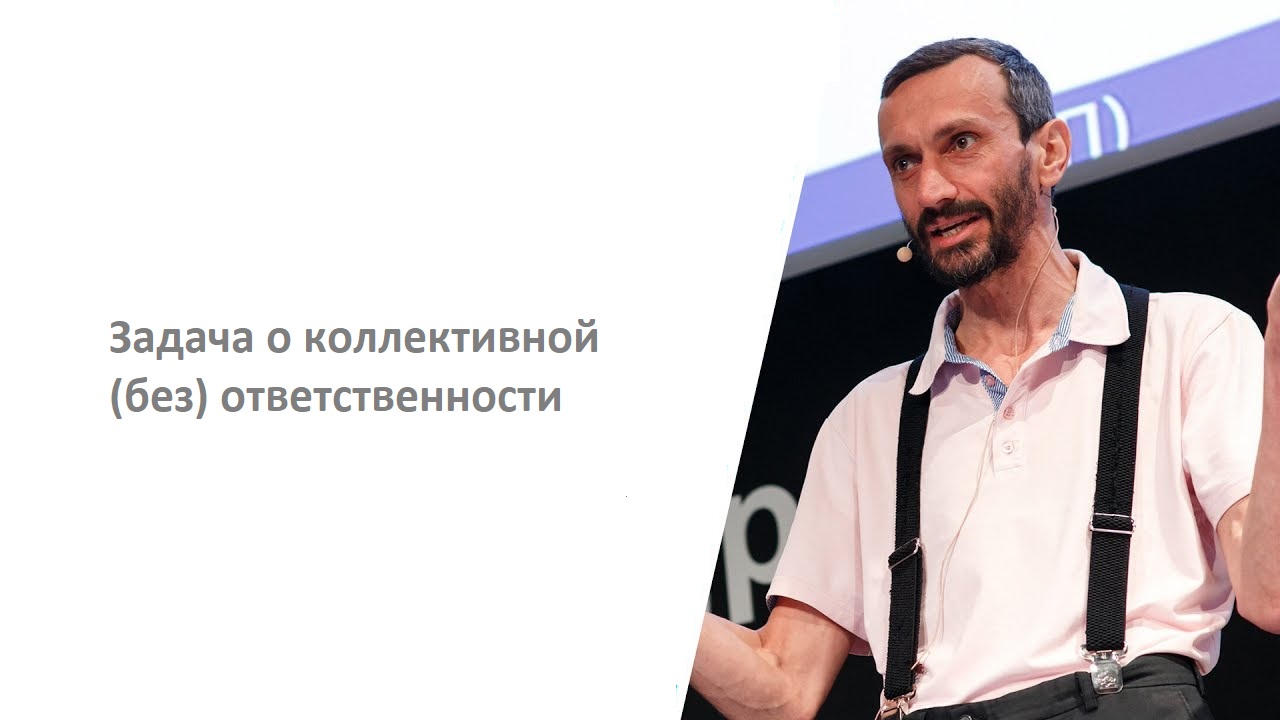
Nomination: For the study of the theory of contracts in the neoclassical economy. The neoclassical trend implies the rationality of economic agents, makes extensive use of the theory of economic equilibrium and the theory of games.
Oliver Hart and Bengt Holmstrom.The contract. What it is? I am an employer, I have several employees, I tell them how their salary will be arranged. In what cases and what they will receive. These cases may include the behavior of their colleagues.
I will give five examples. Three of them illustrate how an attempt at intervention has worsened the situation.
 1.
1. Students crossed the street in different places. The cars slowed down, the students ran across, the traffic was somehow "organized." Chaotic, but everything is fine, life goes on.
A couple of years ago I received a decree that we need to organize a single pedestrian crossing. On the road section 200-300 meters. Around there are fences and all students go into this one passage. As a result, students within 25 minutes completely block traffic from 8-45 to 9-10. No car can drive. A typical example of a “negative contract”.
2. I did not find the exact confirmation. Factoid, something that everyone knows as a fact, but in reality, perhaps, has no confirmation.
In the eastern country, they began to fight rats. They began to pay for the killed rat ("10 coins"). Then everything is clear, everyone abandoned business and began to breed rats. (
They shouted from the audience that the incident took place in India with cobras ( Cobra effect ) .)
3. There were two auctions for the sale of mobile frequency bands, in England and in Switzerland. In England, the process was led by Roger Myerson, a Nobel laureate. He directed so that the cost of the contract was about 600 pounds for each Englishman. And in Switzerland, the auction failed completely. They conspired and came out at 20 francs per person.
4. I can’t speak without tears, but the tears are already over. Unified State Exam destroyed school education. It was thought to fight corruption, so that everything was honest, fair. How it all ended, I can say that in most schools, except for the best, there is a training on the exam, study is stopped, and training is in progress. Teachers are told directly: “Your salary and your presence at school depends on how your students pass the exam.”
The same is with articles and scientometrics.
5. Tax policy. There are many successful examples and many not successful. Most of the report will be devoted to this issue.
Mechinism design
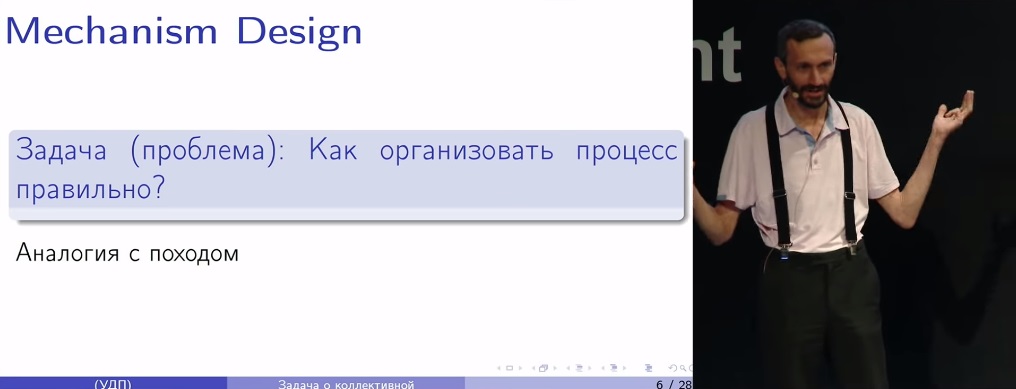
I saw many different hiking groups, including a huge size - 30-40-50 people. With a properly organized process - this is such a combat unit, lives as one organism. Each has its own role, its own business. And in other places - a relaxed mess.
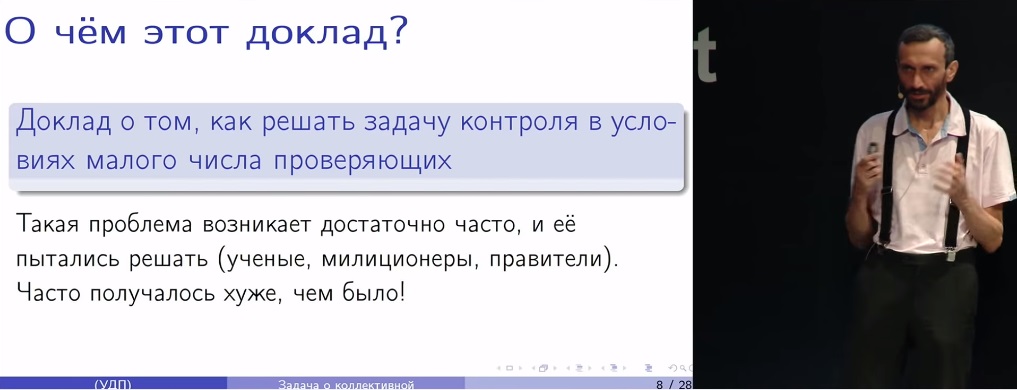
How to solve the control problem, if there are very few controlling ones?
Such a problem often arises in different forms. It was not always resolved successfully.
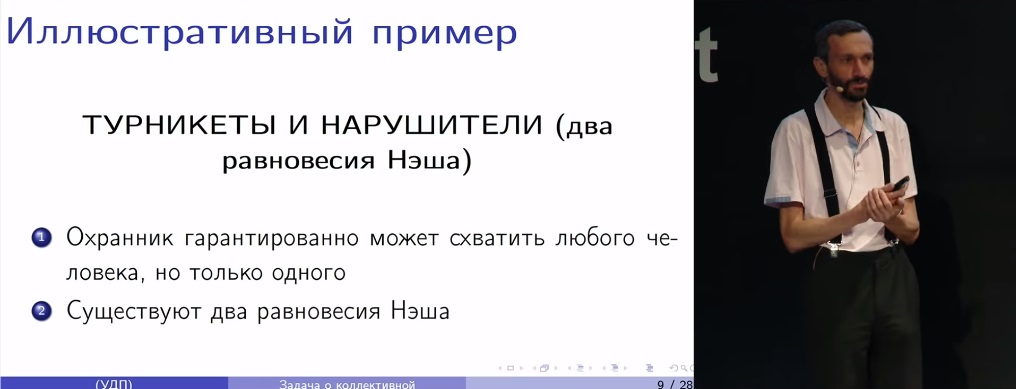
Example.
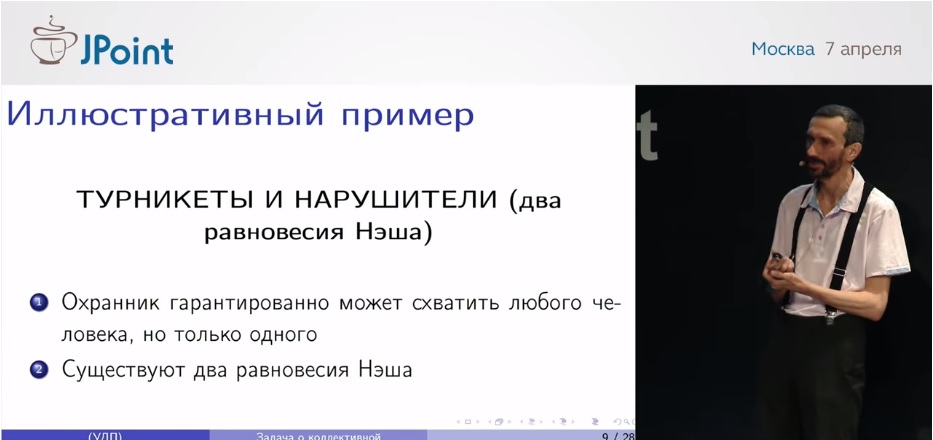
There is a subway with a switch to electric trains. 20 turnstiles and one checking guard. And from this side in the corner crowds of 10 hares. An electric train arrives and everyone fell as if on command. The guard grabs one of them, but the rest will run. If we look at this situation from the point of view of game theory, then this is a situation in which there are two completely different equilibrium scenarios.
In one, nobody goes and everyone knows that nobody goes, nobody tries, this is a self-sustaining scenario. This balance, everyone is doing the “right thing”. And one person holds back the whole crowd.
But there is another balance. Everyone is running. If you believe that everyone is running, then the probability that they will seize you is 1/15, you can take a chance. The presence of two options is a big challenge to scientists in the field of game theory. Perhaps half of game theory is devoted to handling such situations. How to put a thought into the brains of hares so that they are afraid to “slip through”?
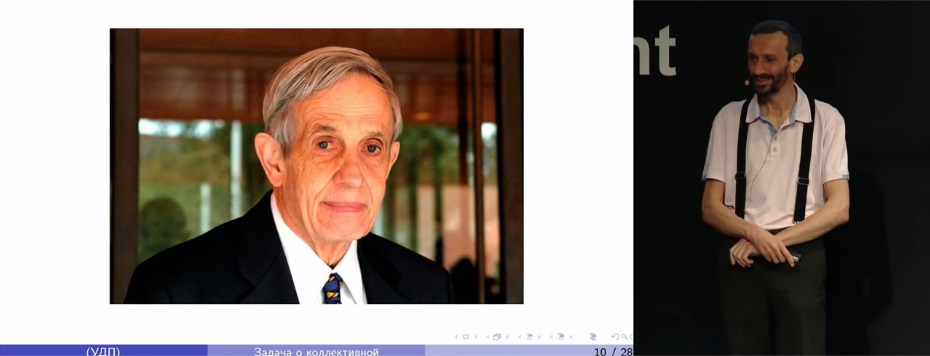
This is John Nash. He proved a very general theorem on the existence of equilibrium in games with interconnected solutions. When the result depends not only on your decisions, but also on the decisions of all other participants.
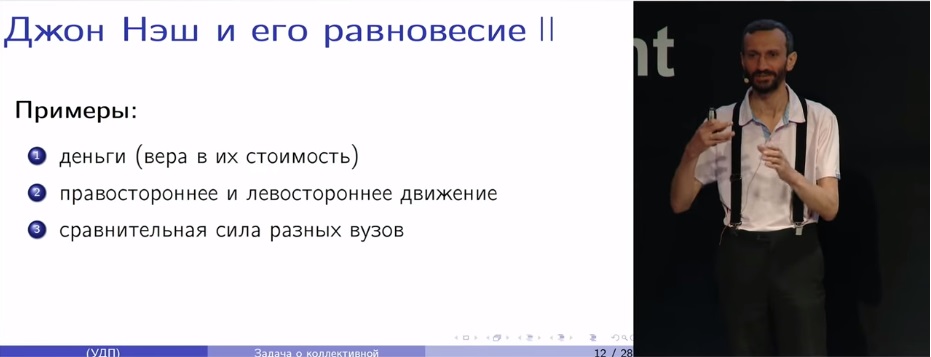
A few examples of equilibrium.
What is
money ? You have some strange piece of paper in your pocket. You worked and these pieces of paper (numbers on the account) became more. By themselves, they mean nothing. You can light a fire and warm yourself. But you believe that they mean something. You know that you will go to the store and they will be accepted. Anyone who accepts, also believes that he will be accepted further. The universal belief that these pieces of paper have value is a social balance, which, from time to time, collapses when hyperinflation occurs. Then, from a situation where everyone believes in money, it turns into a situation where everyone does not believe in money.
Right and left hand traffic. In some countries, it’s different, but you follow these rules.
Why do people go to fizteh? Because there is confidence that they teach well there. There is confidence that other strong students will go there. Imagine for a second that some company of very strong schoolchildren suddenly agreed and went to some weak university. He will immediately become strong.
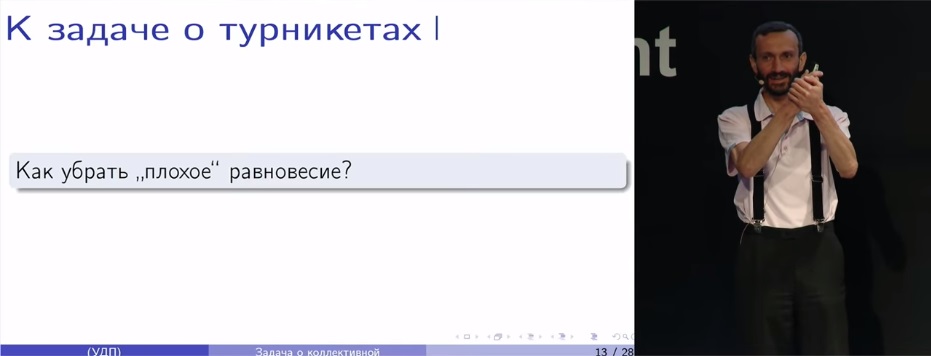
How to guard to remove bad balance?
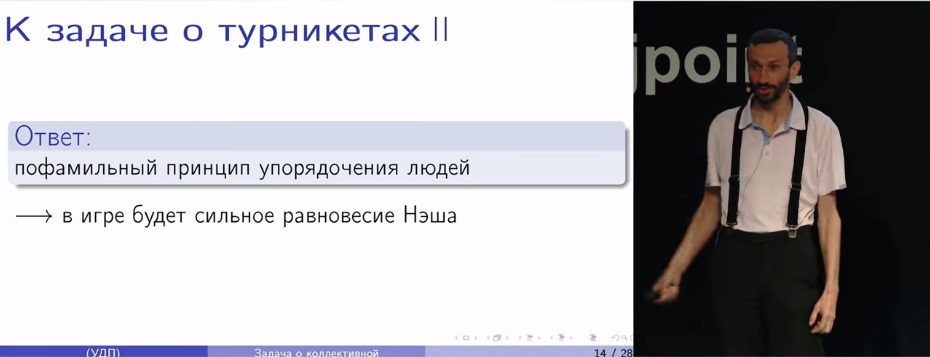
All hares should be numbered aloud and reported that no matter who jumps, they will catch the minimum by number.
Let's say some company decided to jump. Then the one with the minimum number knows for sure that he will be caught and will not jump. Equilibrium - this is when we correctly guess the actions of others and our actions that others guess about us. In the situation of “listing out loud”, equilibrium has the additional property of stability. It is resistant against “coordination / cooperation”. That is, in this balance it is impossible to even agree that at the same time a certain number of people will change their behavior so that as a result everyone will feel better.
If you compose complex rules and the company is not able to understand them, then you cannot expect them to behave in accordance with the Nash equilibrium. They will make random choices.
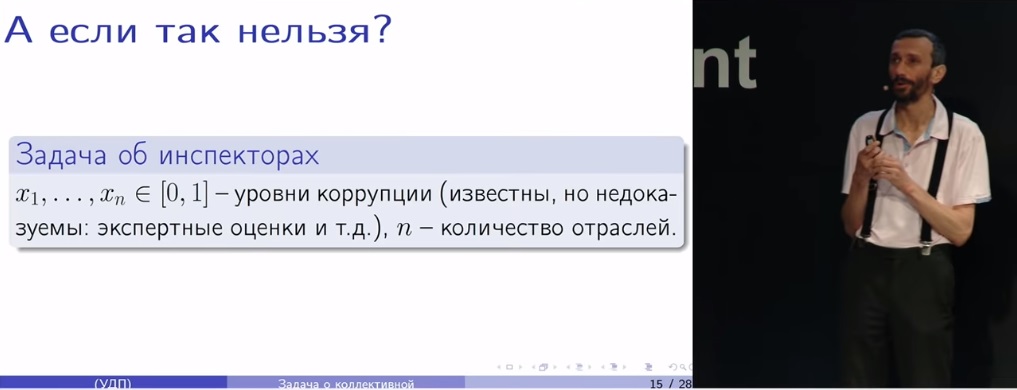
Suppose we are forbidden (institutional restriction) to "list out loud." Our strategies should be symmetrical (anonymous). But we can refer to the "coin." That will drop out - I do one thing, the other will drop out - I do the second.
Serious challenge. It was formulated and studied 20 years ago. No one paid taxes. They tried to organize the process this way and that. Zero profits, bribes ... The tax authorities turned to the institute in which I work a little, to my supervisor. Together we formulated the problem like this. There are n branches, each has its own inspector, but in some% of cases he enters into a conspiracy. % everyone chooses for himself. x
1 , x
2 ... x
n .
x = 0 means that the inspector decided to be honest. x = 1 in all cases takes bribes.
X could be recognized by indirect signs, but we cannot use it in court. Based on this information, you need to build a verification strategy.
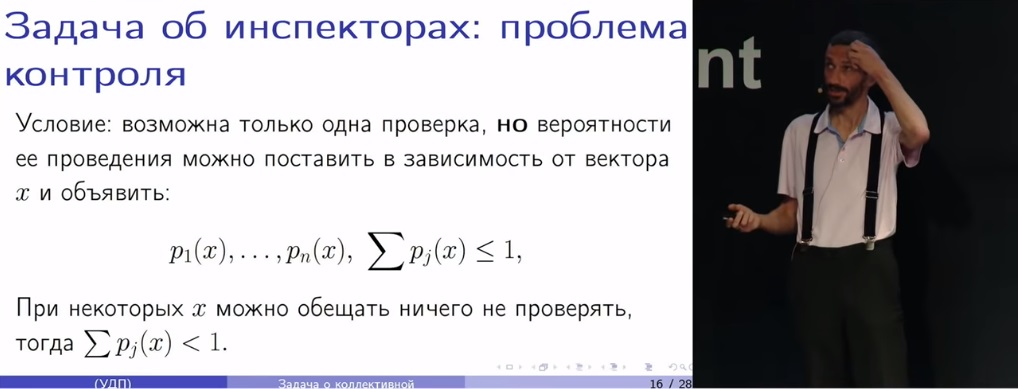
It can be simplified to the point that there is only one check, but with a very large fine. And we assign probability to this test. The probability that I will come to you is like that, and to you - like this. And these are functions from X. And the amount does not exceed one. Strategically correct, in some cases do not check at all and promise them that.
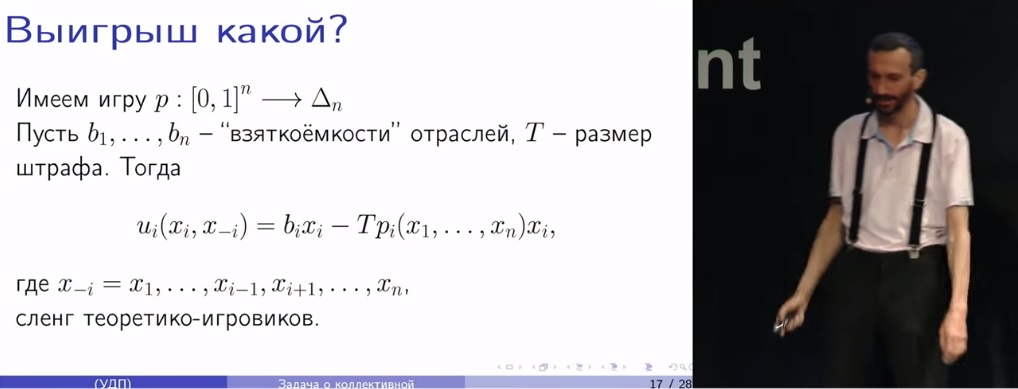
p is the mapping of an n-dimensional cube into the set of all probability distributions. It is necessary to register their winnings, to understand how many of them will receive when they decide on what% of cases to take bribes.
b
i - “bribe-taking” of the industry (if everywhere you take a bribe instead of tax).
The penalty is deducted with the probability with which it will come. Which one? First of all, you need to check it. But that’s not all, the check may run into the case when everything was clean. Simple formula, but complexity buried in "p".
We have slang that is not in other branches of mathematics: x
-i . This is a set of all variables except mine. This is what the others did. This is collective responsibility.
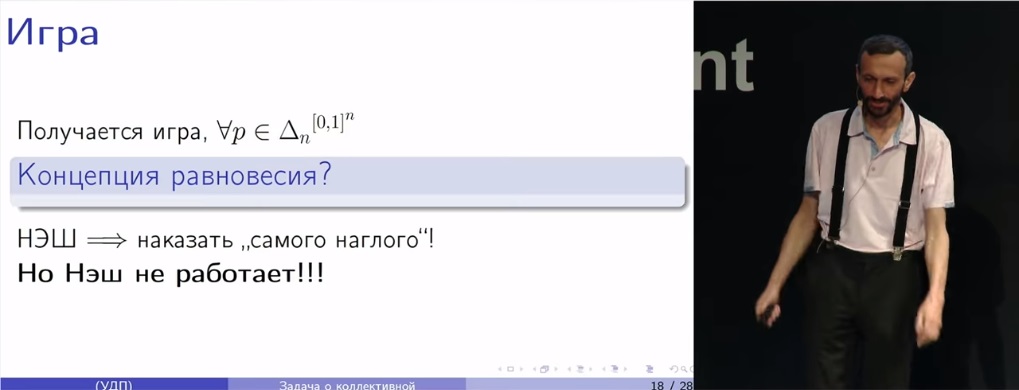
Now the question is:
In what concept of equilibrium do we assume that they will be?In the 90s there was a puncture here. The organizers of the audit announced to everyone that the most arrogant would be punished. A check will come to him.
What will the forecast for this situation look like?
The people who set the rules thought there would be independent interaction. The only equilibrium is all by zeros. And in real life it was 100% Why?
The answer is that the balance is unstable to collusion.
We started scratching turnips.

A leading example is individual responsibility. Imagine an eerie situation that the law’s fine is less than a bribe. If an inspector sits on such an “oily” industry that his bribe collection is higher than a fine, is there anything you can do? The fine cannot be taken several times.

I know that the inspector will pay off and will be in the black. But I can promise you not to check at all if your level of corruption is no higher than 30%. What is more profitable?
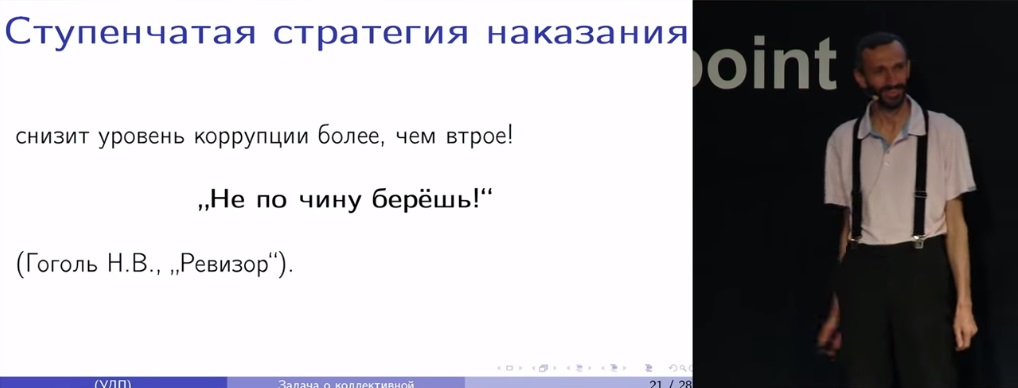
The classics already had it.
The level of corruption is reduced
threefold .

Abstract situation. 4 people. Bribery below penalty.
If you rely on individual contracts, you will not “zero out” everyone. But I can put everyone to zero using a collective responsibility strategy.
I equally send the test with equal probabilities not to the maximum, but to nonzero. All thieves who have a non-zero percentage - everyone will receive a check with a probability of 1/4. I don’t even change the probability depending on the X.
Then there are no equilibria except zero. And there can be no collusion either.
And if there is not only a silent conspiracy, but also the transfer of money, then the theory of games completely fails. There is rigorous evidence.
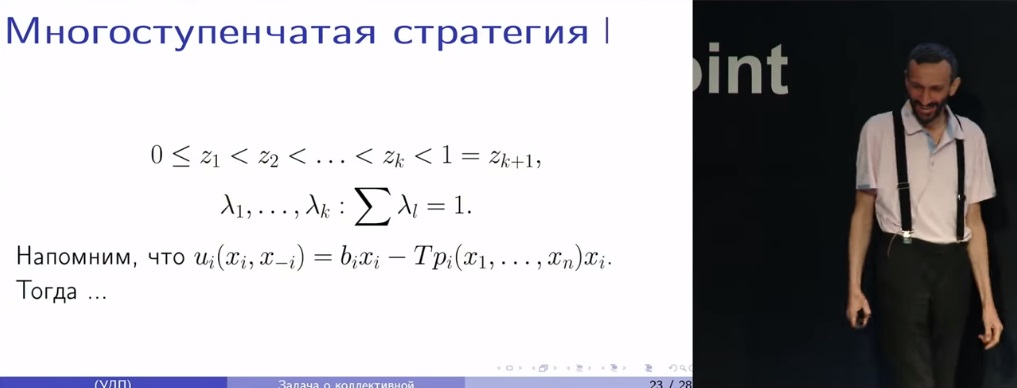
A whole class of strategies has been developed that is implemented through a strong Nash equilibrium that is resistant to collusion.
We assign several levels of tolerance to corruption. z
1 is a completely tolerant level, the rest is increased intolerance. And for each level highlights the probability of verification. The formula is as follows:

λ
1 - probability of verification at the first level of tolerance - is divided equally between all who exceeded it, in addition, λ
2 is divided between all who exceeded the second threshold, and so on.
I proved the following theorem 15 years ago.
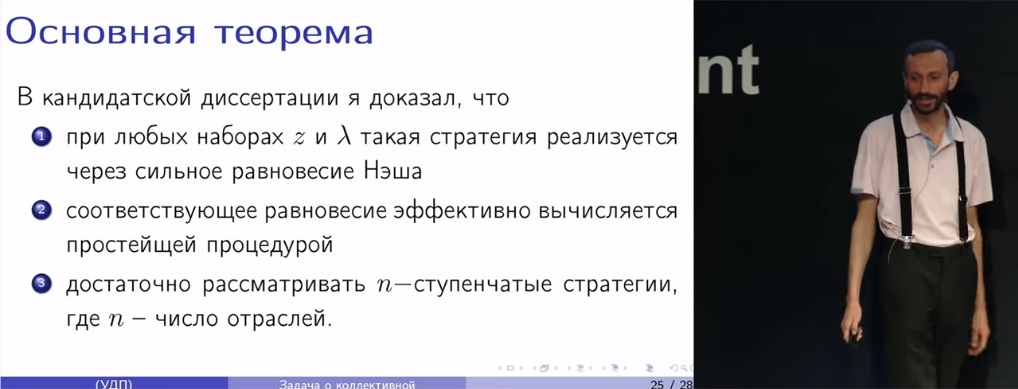
This strategy was used before me as a strategy for sharing costs.

Contracts cost money. Well-designed interaction schemes are a huge saving of money. Time saving.
Collective responsibility is effective. To attach a person to a group is effective.
As I made a report at the Ministry of Internal Affairs.
I arrived, there were about 40 policemen of different ranks, they listened, looked at each other, whispered, and then the chief came up to me and said: “Alexey, thank you, it's interesting to listen to a person who is passionate about his science ... but this has nothing to do with reality.”
The experimentally observed Russian corrupt officials behave differently from the experimentally observed American ones. Do you know the difference? When a Russian starts taking bribes, he is no longer an economic agent who rationally maximizes his profit. [Applause]
A person begins to take bribes all the way, never discussing anything. He must be seized and imprisoned, and this is all science.
Thank.